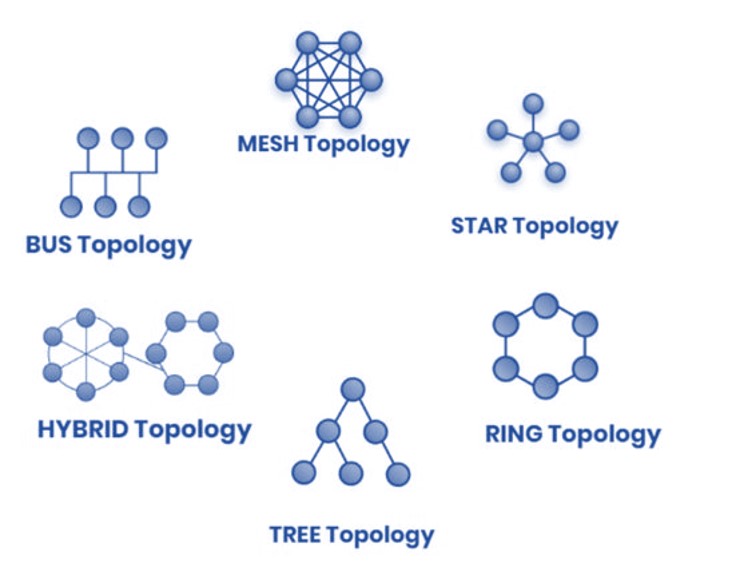IT Infrastructure series - Episode 6
 Sunitha Shenoy
Sunitha ShenoyTable of contents

Let us continue with Networking and we will discuss about the Network topology in this episode.

Mesh Topology If every device connects to another device via links that forms the Mesh Topology Advantages • Provides robust security and privacy as data is transferred using dedicated links • Hence problem detection also becomes easier • Even if a cable or device fails other nodes will still work Disadvantages • High cost due to bulk wiring requirement, which complicates the installation and configuration • Hence Maintenance costs are also higher.
Star Topology If all devices are connected to a single hub through cable it forms the Star Topology. The hubs in the topology can be either active or passive. Active hubs will have repeaters Advantages • Easy to setup, modify, troubleshoot and upgrade. • Even if 1 node fails rest of the network will function • If the nodes are lower and so is the traffic performance is faster Disadvantages • High installation and maintenance cost. • Failure of hub causes the entire network to fail • Hence performance is dependent on Hub and the capacity of it.
Ring Topology If each device is connected to one another and the last one connects to the first it forms the Ring Topology. Data transfer is therefore sequential and it has to pass through each node before reaching the destination. This Topology has a large number of repeaters to prevent data loss. In this the data transmission is uni-directional, but in dual ring topology its bi-directional and if one ring fails the other will act as a backup. Advantages • Cost effective to install and upscale • High traffic or additional nodes does not affect the transmitting network • Only Token bearing nodes transmit the data Disadvantage • One computer fails the entire network fails • To add or delete a computer downtime is required • Hence trouble shooting is difficult
Tree Topology If there is a root device(node) and all other devices(nodes) are connected to it at three level hierarchically it forms Tree Topology. This is the most common topology used in WAN as its suitable for grouped workstations. Advantages • Since nodes can be expanded, Tree topology Can be an extension of the Bus and Star Topologies • It allows easy error detection and hence is easy to manage and maintain. Disadvantages • As it requires heavy cabling its expensive to implement • Maintenance becomes difficult as more nodes are added • The whole network fails if the central hub fails
Hybrid Topology
If an organisation deploys features of two or more topologies that would result in a Hybrid topology it could be ring and star for various departments respectively. Advantages • Its scalable, effective and flexible • Since error detection and troubleshooting is easy its reliable as well. Disadvantages • Complex design can be expensive
Community and Social Footprints :
- Sunitha Shenoy
- GitHub
- YouTube Cloud DevOps Free Trainings
- Linkedin Page
- Linkedin Group
- Discord Channel
- Dev
Subscribe to our newsletter Read articles from Cloudnloud Tech Community directly inside your inbox. Subscribe to the newsletter, and don't miss out.
Subscribe to my newsletter
Read articles from Sunitha Shenoy directly inside your inbox. Subscribe to the newsletter, and don't miss out.
Written by
